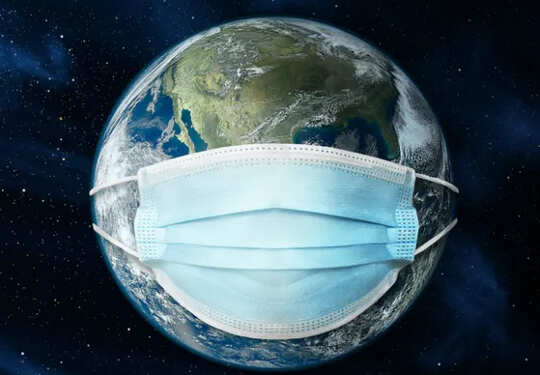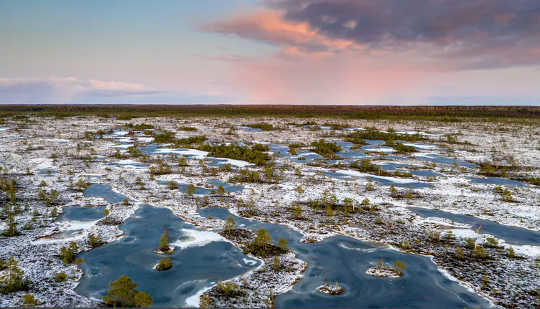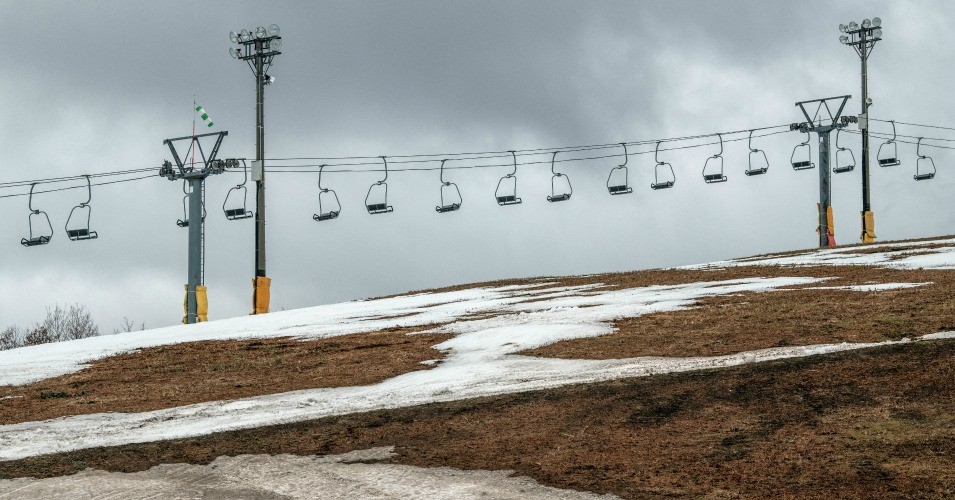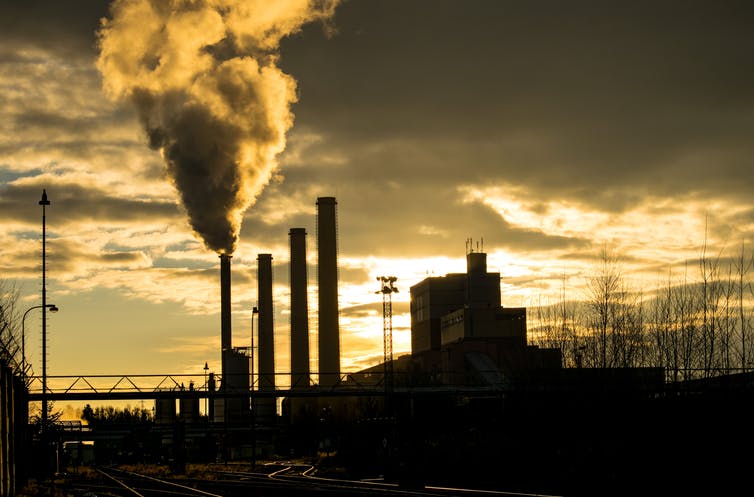
When a hurricane hits land, the destruction can be visible for years or even decades. Less obvious, but also powerful, is the effect hurricanes have on the oceans.
- By Alex Smith

The fact that humans contribute to the warming of our planet is nothing new. Scientists have been telling us about the human-climate change connection for years, but now they can say for certain that we are responsible for “drought”.

The Western U.S. appears headed for another dangerous fire season, and a new study shows that even high mountain areas once considered too wet to burn are at increasing risk as the climate warms.

The planet had already warmed by around 1.2? since pre-industrial times when the World Health Organization officially declared a pandemic on March 11 2020.

High fire risk days have been common this year as the 2020 wildfire season shatters records across the West.

It was a grim record. On June 20 2020, the mercury reached 38°C in Verkhoyansk, Siberia – the hottest it’s ever been in the Arctic in recorded history.

Peatlands cover just a few percent of the global land area but they store almost one-quarter of all soil carbon and so play a crucial role in regulating the climate.

We know the climate changes as greenhouse gas concentrations rise, but the exact amount of expected warming remains uncertain.

Global emissions of methane have reached the highest levels on record, research shows.

The last time global carbon dioxide levels were consistently at or above 400 parts per million (ppm) was around four million years ago during a geological period known as the Pliocene Era (between 5.3 million and 2.6 million years ago).

Jules Verne sent his fictional submarine, the Nautilus, to the South Pole through a hidden ocean beneath a thick ice cap.

Ice shelves, massive floating bodies of ice, are well-known for their buffering effect on land-based ice sheets as they slow their flow towards the sea.

Earth had several periods of high carbon dioxide levels in the atmosphere and high temperatures over the last several million years.
- By Mark Maslin

Humans are amazing creatures, in that they have show they can live in almost any climate.
 Author supplied
Author supplied
The Australian summer just gone will be remembered as the moment when human-caused climate change struck hard. First came drought, then deadly bushfires, and now a bout of coral bleaching on the Great Barrier Reef – the third in just five years. Tragically, the 2020 bleaching is severe and the most widespread we have ever recorded.
Coral bleaching at regional scales is caused by spikes in sea temperatures during unusually hot summers. The first recorded mass bleaching event along Great Barrier Reef occurred in 1998, then the hottest year on record.
Since then we’ve seen four more mass bleaching events – and more temperature records broken – in 2002, 2016, 2017, and again in 2020.
This year, February had the highest monthly sea surface temperatures ever recorded on the Great Barrier Reef since the Bureau of Meteorology’s records began in 1900.
Coral bleaching at Magnetic Island, March 2020. (Video by Victor Huertas)
Not a pretty picture
We surveyed 1,036 reefs from the air during the last two weeks in March, to measure the extent and severity of coral bleaching throughout the Great Barrier Reef region. Two observers, from the ARC Centre of Excellence for Coral Reef Studies and the Great Barrier Reef Marine Park Authority, scored each reef visually, repeating the same procedures developed during early bleaching events.
The accuracy of the aerial scores is verified by underwater surveys on reefs that are lightly and heavily bleached. While underwater, we also measure how bleaching changes between shallow and deeper reefs.
Of the reefs we surveyed from the air, 39.8% had little or no bleaching (the green reefs in the map). However, 25.1% of reefs were severely affected (red reefs) – that is, on each reef more than 60% of corals were bleached. A further 35% had more modest levels of bleaching.
Bleaching isn’t necessarily fatal for coral, and it affects some species more than others. A pale or lightly bleached coral typically regains its colour within a few weeks or months and survives.
 The 2020 coral bleaching event was the second-worst in more than two decades. ARC Centre of Excellence for Coral Reef Studies
The 2020 coral bleaching event was the second-worst in more than two decades. ARC Centre of Excellence for Coral Reef Studies
But when bleaching is severe, many corals die. In 2016, half of the shallow water corals died on the northern region of the Great Barrier Reef between March and November. Later this year, we’ll go underwater to assess the losses of corals during this most recent event.
Compared to the four previous bleaching events, there are fewer unbleached or lightly bleached reefs in 2020 than in 1998, 2002 and 2017, but more than in 2016. Similarly, the proportion of severely bleached reefs in 2020 is exceeded only by 2016. By both of these metrics, 2020 is the second-worst mass bleaching event of the five experienced by the Great Barrier Reef since 1998.
The unbleached and lightly bleached (green) reefs in 2020 are predominantly offshore, mostly close to the edge of the continental shelf in the northern and southern Great Barrier Reef. However, offshore reefs in the central region were severely bleached again. Coastal reefs are also badly bleached at almost all locations, stretching from the Torres Strait in the north to the southern boundary of the Great Barrier Reef Marine Park.
For the first time, severe bleaching has struck all three regions of the Great Barrier Reef – the northern, central and now large parts of the southern sectors. The north was the worst affected region in 2016, followed by the centre in 2017.
In 2020, the cumulative footprint of bleaching has expanded further, to include the south. The distinctive footprint of each bleaching event closely matches the location of hotter and cooler conditions in different years.
Poor prognosis
Of the five mass bleaching events we’ve seen so far, only 1998 and 2016 occurred during an El Niño – a weather pattern that spurs warmer air temperatures in Australia.
But as summers grow hotter under climate change, we no longer need an El Niño to trigger mass bleaching at the scale of the Great Barrier Reef. We’ve already seen the first example of back-to-back bleaching, in the consecutive summers of 2016 and 2017. The gap between recurrent bleaching events is shrinking, hindering a full recovery.
 For the first time, severe bleaching has struck all three regions of the Great Barrier Reef. ARC Centre of Excellence for Coral Reef Studies
For the first time, severe bleaching has struck all three regions of the Great Barrier Reef. ARC Centre of Excellence for Coral Reef Studies
After five bleaching events, the number of reefs that have escaped severe bleaching continues to dwindle. Those reefs are located offshore, in the far north and in remote parts of the south.
The Great Barrier Reef will continue to lose corals from heat stress, until global emissions of greenhouse gasses are reduced to net zero, and sea temperatures stabilise. Without urgent action to achieve this outcome, it’s clear our coral reefs will not survive business-as-usual emissions.
About The Author
Terry Hughes, Distinguished Professor, James Cook University and Morgan Pratchett, Professor, ARC Centre of Excellence for Coral Reef Studies, James Cook University
This article is republished from The Conversation under a Creative Commons license. Read the original article.
Related Books
Climate Change: What Everyone Needs to Know
by Joseph Romm The essential primer on what will be the defining issue of our time, Climate Change: What Everyone Needs to Know® is a clear-eyed overview of the science, conflicts, and implications of our warming planet. From Joseph Romm, Chief Science Advisor for National Geographic's Years of Living Dangerously series and one of Rolling Stone's "100 people who are changing America," Climate Change offers user-friendly, scientifically rigorous answers to the most difficult (and commonly politicized) questions surrounding what climatologist Lonnie Thompson has deemed "a clear and present danger to civilization.". Available On Amazon
The essential primer on what will be the defining issue of our time, Climate Change: What Everyone Needs to Know® is a clear-eyed overview of the science, conflicts, and implications of our warming planet. From Joseph Romm, Chief Science Advisor for National Geographic's Years of Living Dangerously series and one of Rolling Stone's "100 people who are changing America," Climate Change offers user-friendly, scientifically rigorous answers to the most difficult (and commonly politicized) questions surrounding what climatologist Lonnie Thompson has deemed "a clear and present danger to civilization.". Available On Amazon
Climate Change: The Science of Global Warming and Our Energy Future second edition Edition
by Jason Smerdon This second edition of Climate Change is an accessible and comprehensive guide to the science behind global warming. Exquisitely illustrated, the text is geared toward students at a variety of levels. Edmond A. Mathez and Jason E. Smerdon provide a broad, informative introduction to the science that underlies our understanding of the climate system and the effects of human activity on the warming of our planet.Mathez and Smerdon describe the roles that the atmosphere and ocean play in our climate, introduce the concept of radiation balance, and explain climate changes that occurred in the past. They also detail the human activities that influence the climate, such as greenhouse gas and aerosol emissions and deforestation, as well as the effects of natural phenomena. Available On Amazon
This second edition of Climate Change is an accessible and comprehensive guide to the science behind global warming. Exquisitely illustrated, the text is geared toward students at a variety of levels. Edmond A. Mathez and Jason E. Smerdon provide a broad, informative introduction to the science that underlies our understanding of the climate system and the effects of human activity on the warming of our planet.Mathez and Smerdon describe the roles that the atmosphere and ocean play in our climate, introduce the concept of radiation balance, and explain climate changes that occurred in the past. They also detail the human activities that influence the climate, such as greenhouse gas and aerosol emissions and deforestation, as well as the effects of natural phenomena. Available On Amazon
The Science of Climate Change: A Hands-On Course
by Blair Lee, Alina Bachmann The Science of Climate Change: A Hands-On Course uses text and eighteen hands-on activities to explain and teach the science of global warming and climate change, how humans are responsible, and what can be done to slow or stop the rate of global warming and climate change. This book is a complete, comprehensive guide to an essential environmental topic. Subjects covered in this book include: how molecules transfer energy from the sun to warm the atmosphere, greenhouse gases, the greenhouse effect, global warming, the Industrial Revolution, the combustion reaction, feedback loops, the relationship between weather and climate, climate change, carbon sinks, extinction, carbon footprint, recycling, and alternative energy. Available On Amazon
The Science of Climate Change: A Hands-On Course uses text and eighteen hands-on activities to explain and teach the science of global warming and climate change, how humans are responsible, and what can be done to slow or stop the rate of global warming and climate change. This book is a complete, comprehensive guide to an essential environmental topic. Subjects covered in this book include: how molecules transfer energy from the sun to warm the atmosphere, greenhouse gases, the greenhouse effect, global warming, the Industrial Revolution, the combustion reaction, feedback loops, the relationship between weather and climate, climate change, carbon sinks, extinction, carbon footprint, recycling, and alternative energy. Available On Amazon
From The Publisher:
Purchases on Amazon go to defray the cost of bringing you InnerSelf.comelf.com, MightyNatural.com, and ClimateImpactNews.com at no cost and without advertisers that track your browsing habits. Even if you click on a link but don't buy these selected products, anything else you buy in that same visit on Amazon pays us a small commission. There is no additional cost to you, so please contribute to the effort. You can also use this link to use to Amazon at any time so you can help support our efforts.

Climate change is an interdisciplinary subject that both school children and adults think is important. And as we deal with the current crisis – which is also having its own effects on the environment – there is perhaps no better time to think about how to avoid the next, potentially even greater one.

The World Meteorological Organisation today published a definitive climate report card showing concentrations of greenhouse gases continue to rise, and the last five years were the warmest on record.
- By Julia Conley

The world's top meteorological experts issued the warning as cities and countries around the world reported record-breaking warm winters.

The latest report from the Intergovernmental Panel on Climate Change (IPCC) states that without a substantial decrease in our use of fossil fuels, we are on track for a global average increase of 2? in the next few decades, with extremes of between 3 to 6? at higher latitudes.

A quarter of climate-related tweets in the studied period—around when Trump announced plans to ditch the Paris agreement—came from bots.

The relationship between atmospheric CO2 levels and climate change is often perceived as a controversial subject.

Can the future be predicted? Most certainly. Can anyone or anything predict the future with any certainty?

This analysis shows that we're heading in the wrong direction and really need to slow emissions growth from the oil, gas, and petrochemical industries.



















